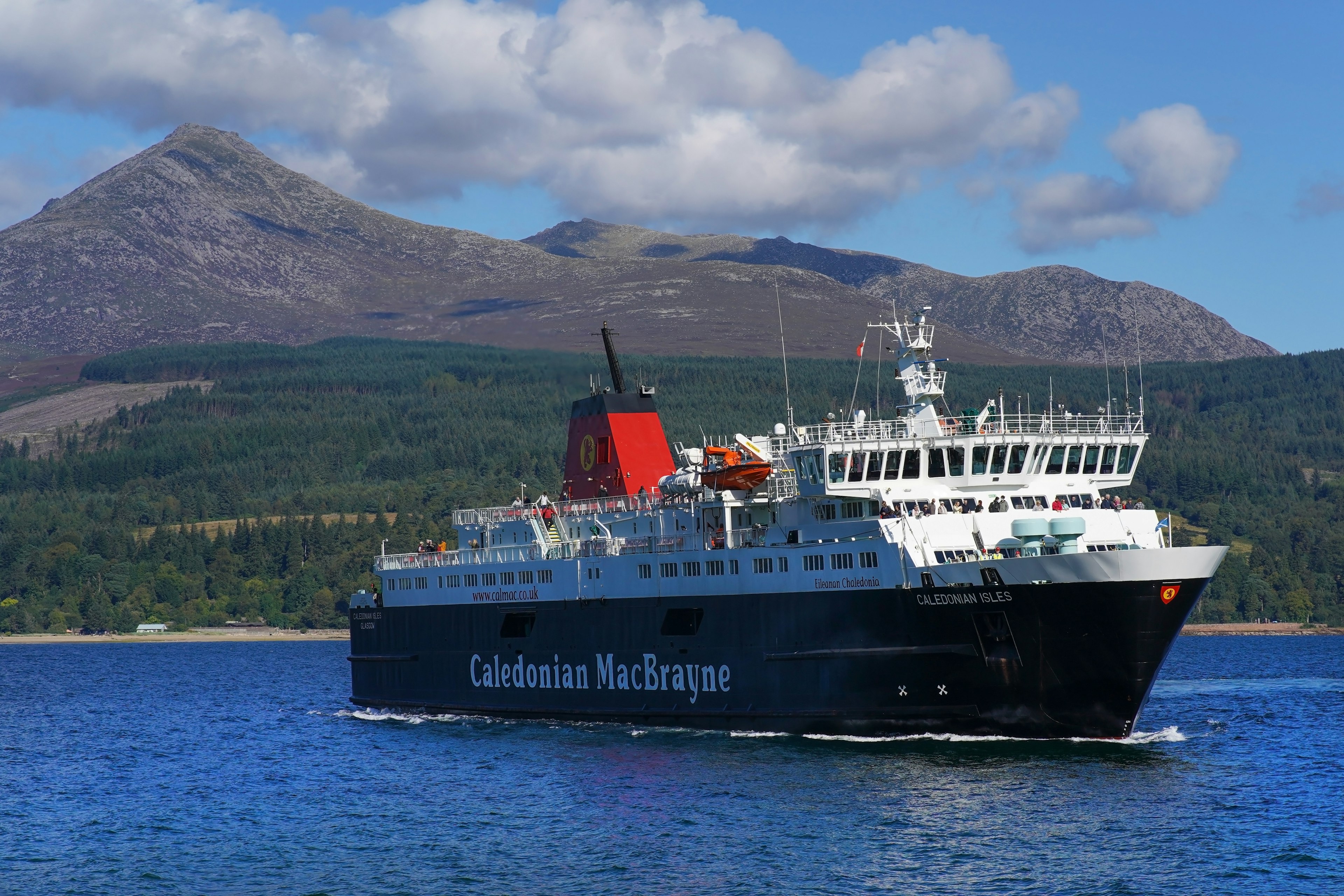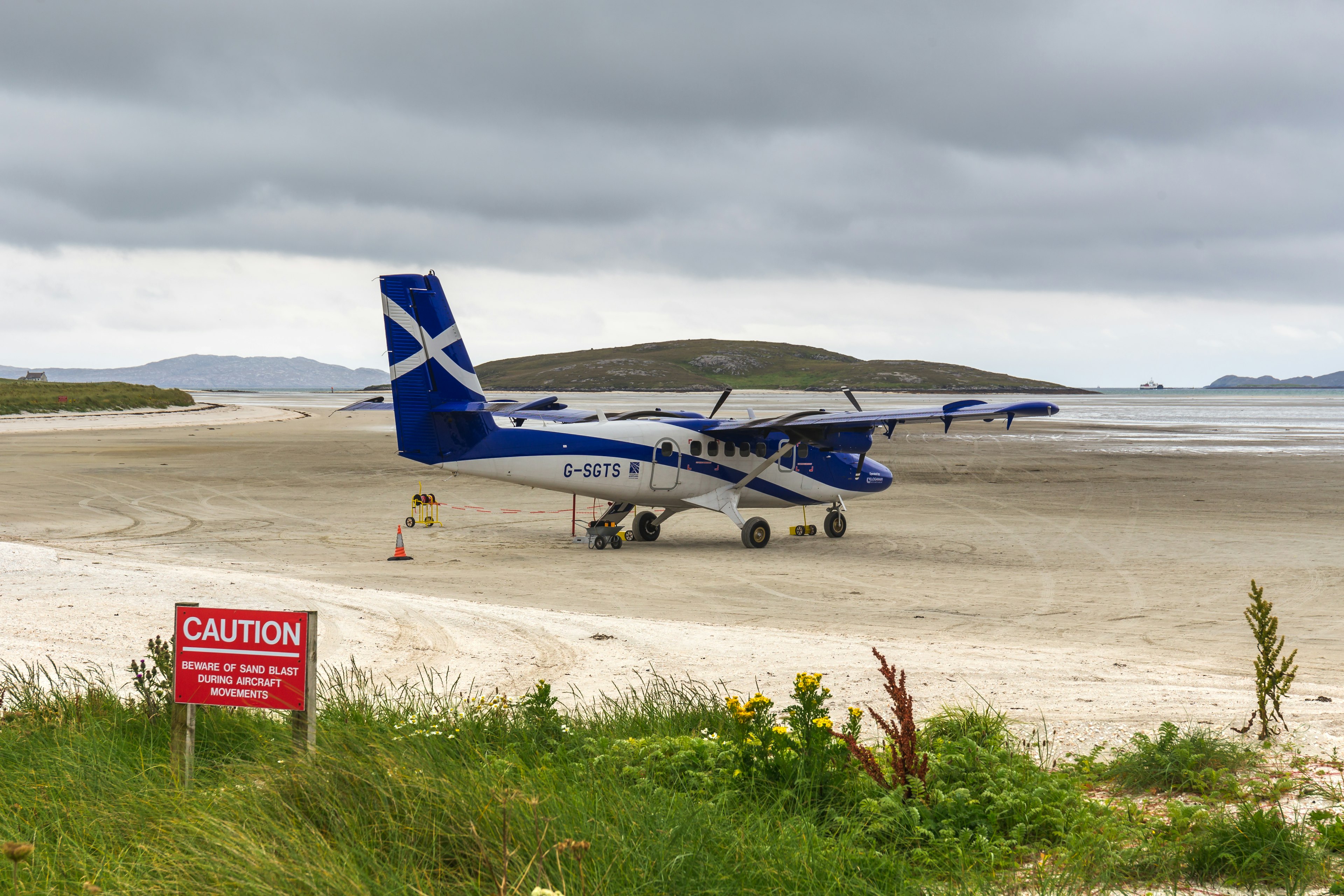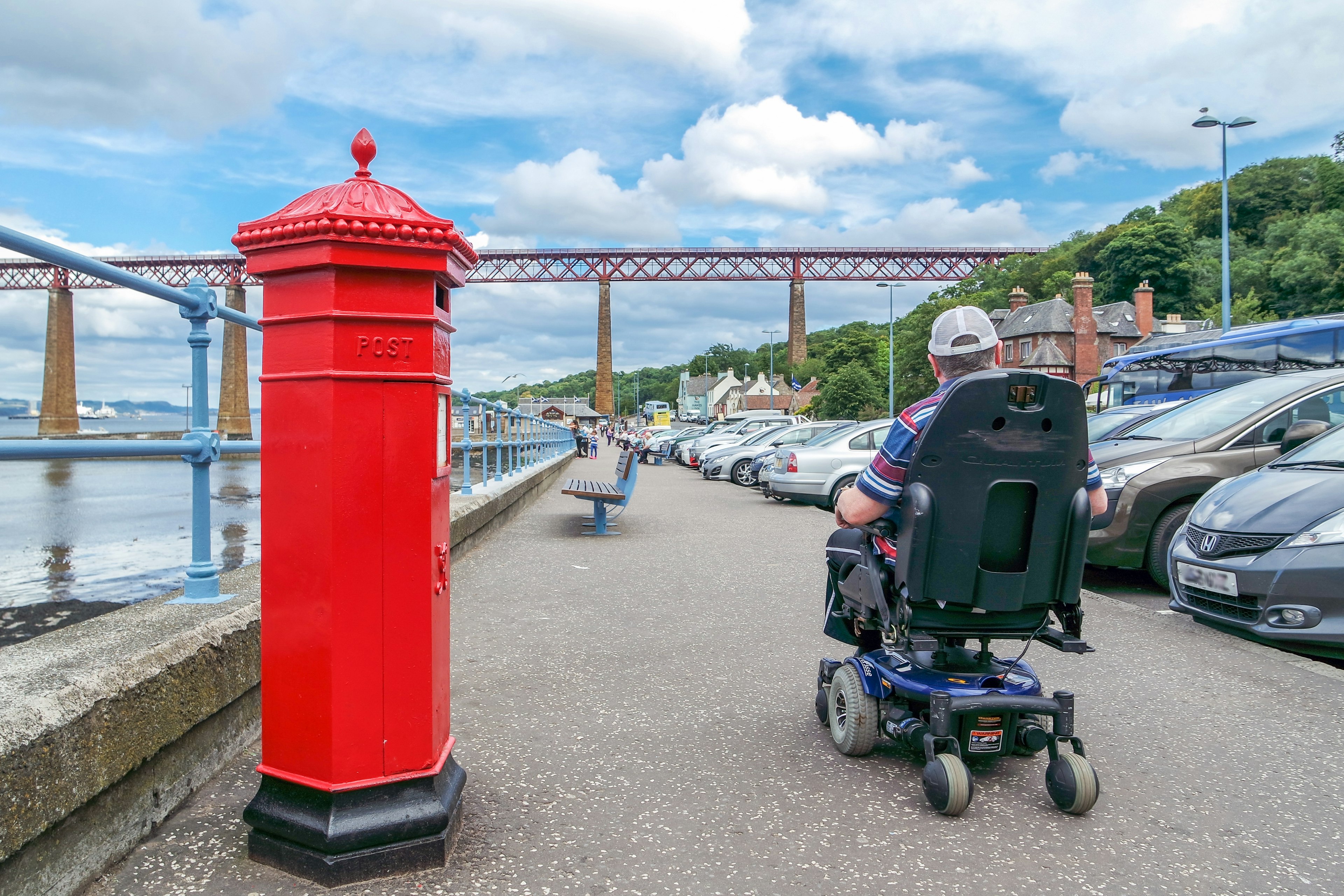
The distances within Scotland may seem small – but the country’s landscapes are epic.
A journey that seems just a few miles as the crow flies can take hours once you factor in all the glens, lochs and mountains in the way. Remember, too, that large parts of Scotland lie off the mainland, scattered among the choppy waters of the North Sea and the Atlantic.
With this in mind, the most important consideration when planning a trip around Scotland is time. On a fleeting visit, try not to be too ambitious about how much ground you can cover, and plan train journeys and ferry trips in advance so you’re not caught off guard by limited schedules in outlying areas.
Cost-wise, getting around in Scotland can be expensive compared to the rest of Europe. Despite an impressive network of train, bus and ferry routes, the easiest option is usually to travel with your own car, particularly if you want to get off the tartan-and-shortbread tourist trail. Yet outlays can mount quickly if you plan to park in larger cities or take your car on the ferry.
Traveline Scotland is a good source of information and up-to-date timetables on all forms of transit, including ferries and short flights to the Scottish islands. And our breakdown of the different ways to get around the country will help you get your dream trip to Scotland planned in no time.

The train is a great option between major towns and cities
Scotland's extensive train network covers all major cities and towns. But do keep in mind that the railway map has large blank areas in the Highlands and the Southern Uplands where you'll need to switch to road transport – in many cases, a local bus.
The West Highland line, from Glasgow to Fort William and Mallaig, and the Inverness–to–Kyle of Lochalsh line are two of the world’s most scenic rail journeys. ScotRail’s website is a good source of information on routes, fares and timetables.
Buses serve most places – but not always frequently
Scotland is served by an extensive bus network that covers most of the country. In remote rural areas, however, services are geared to the needs of locals, for example shuttling students to school or the shoppers to the nearest large town. This means they may not be conveniently timed to the needs of visitors.
Often, buses run into towns and cities in the morning and back to outlying villages in the afternoon – which is inconvenient for those planning day trips. Local bus services are particularly sparse on the islands: the last postbus – a rustic rural transport operation that saw passengers joining vans with the mail service – ceased operation in 2017.
Several bus companies operate services around Scotland, with long-haul routes to destinations in England provided by National Express and Megabus. Within Scotland, Scottish Citylink runs a network of comfortable, reliable buses between large towns. Away from the main roads, you’ll need to switch to local buses, which are often much less frequent. First, Stagecoach and Lothian Buses are the main local bus operators.

A car or motorcycle of your own gives you the most flexibility
Scotland’s roads are generally well-maintained and are far less busy than those in England, meaning you can concentrate on all that lovely scenery. Do keep in mind that authorities take speeding and drunk driving seriously, with speed traps common. Stick to the limits.
A non-UK license is valid in Britain for up to 12 months from your date of entry into the country, and you’ll need to be age 21 or over to rent a car; surcharges and restrictions apply for drivers age 25 or under. Renting in town is usually cheaper than at the airport.
If you’re bringing your own car from Europe, make sure you’re adequately insured, always drive on the left and stay aware of local speed limits. If you’re planning a road trip encompassing the UK and the Republic of Ireland, car ferries run from Scotland to Northern Ireland, allowing you to loop south before getting back on a ferry to Wales and England, and then heading back north to Scotland. Make sure your insurance covers your time passing through an EU country.
Limited mainly to southern and central Scotland, motorways (designated “M”) are toll-free dual carriageways; you’ll quickly notice their absence once you drive north of Perth. Main roads (“A”) are dual or single carriageways and are sometimes clogged with slow-moving trucks and caravans. The A9 from Perth to Inverness is notoriously busy.
Life on the road is more relaxed and interesting on the secondary roads (designated “B”) and minor roads (no letter) – though in the Highlands and on the islands, there’s the added hazard of sheep wandering onto the road (be particularly wary of lambs in spring). Winter driving conditions can be challenging; keep food, water and blankets in the car in case of blocked roads or breakdowns.
Gasoline is more expensive than in countries such as the US or Australia but roughly in line with the rest of Western Europe. Prices tend to rise as you get further from the main centers and can be more than 10% higher in remote areas, where gas stations are far apart and sometimes closed on Sundays. Fill up whenever you get the chance.
Tip for renting a car: Inter-island car ferries can be a major cost. If you’re planning to visit the Outer Hebrides, Orkney or Shetland, it’ll often prove cheaper to hire a car once you arrive on the islands rather than paying to take your rental across on the ferry.

Ferries cross the lochs and link the Scottish islands
Ferries run by Caledonian MacBrayne (CalMac) serve Scotland’s west coast and the myriad islands to the north and west of the country, with smaller local ferries linking the islands of the Inner Hebrides to the mainland.
Northlink Ferries travel from Aberdeen and Scrabster (near Thurso) to Orkney, from Orkney to Shetland, and from Aberdeen to Shetland. Tourist-oriented water bus services ferry passengers across some of Scotland’s larger lochs, including Loch Lomond.
CalMac offers some pre-bundled inter-island tickets on its website, which also has comprehensive timetable information. Note that ferry services are significantly reduced in winter.
Tickets for passengers on foot cost a fraction of the price charged for cars, so consider picking up a rental car once you arrive on a given island rather than taking your car across.
Tips for traveling by ferry: If you feel up to tackling the islands by bike, bicycles can be carried for free by foot passengers – particularly useful when reaching smaller islands by ferry. On most routes, children under 5 also travel for free, while kids ages 5 to 15 pay half the adult rate.

Domestic flights link up remote island communities
Domestic air services in Scotland either cater to business travelers or serve as lifelines for remote island communities. Flying is a costly way to cover relatively short distances, both for your own pocket and the environment – yet this is an option worth considering if you’re short on time and want to visit the Outer Hebrides, Orkney or Shetland. And especially if you’re an aviation geek: with a journey time of as little as 1 minute, the flight between Westray and Papa Westray in Orkney is the shortest scheduled flight in the world.
The main domestic airline in Scotland is Loganair, with flights from Glasgow, Edinburgh, Aberdeen and Inverness to many smaller destinations across Scotland, including inter-island flights in Orkney. Hebridean Air Services flies from Connel airfield near Oban to the islands of Coll, Tiree, Colonsay and Islay.

Cycling is ideal for exploring the islands
In a country as compact as Scotland, traveling around by bicycle is a perfectly feasible proposition if you have the time – and the stamina. Indeed, touring around the islands on a bike is both cheaper than driving (with lower ferry fares, too; see above) and better suited to the islands’ short distances and leisurely pace of life. Any pedaler should be ready for uncooperative winds and weather, and persistent midges at rest stops in spring and summer.
VisitScotland has good information about bike rentals, while Sustrans details routes that form part of the UK-wide National Cycle Network. Spanning 200 miles (322km) and 10 windswept islands between Vatersay and the Butt of Lewis, the Hebridean Way is a bonafide cycling classic.
Transport Passes for Scotland offer good savings on trains, buses and ferries
Even with the multitude of companies providing different forms of public transport in Scotland, there are a few useful passes that allow intermodal travel on trains, buses, ferries and other forms of transport. ScotRail’s Spirit of Scotland pass allows unlimited travel on trains, buses and ferries for foot passengers, for either four days of travel over eight consecutive days (£149) or eight days of travel over 15 consecutive days (£189). There are also several other passes for train travel across Scotland or within specific regions, plus combined passes for trains and buses or trains and ferries.
Scotland is also part of the same scheme of rail passes as the rest of the UK, with various options offering up to a third off standard rail fares, usually for a one-off annual fee of £30 – a good deal if you’ll be making lots of journeys by train or are on a longer trip.
Although the Scottish government’s generous free-transport scheme for young people is only open to Scottish residents, visitors can get discounts using the 16–25 and 26–30 rail cards; there’s also a Senior Railcard for the over-60s. For travelers with kids in tow, the Family & Friends Railcard is a smart investment. Note that all these cards cover train travel across the UK, not just Scotland.
Several bus companies offer their own transport passes. Stagecoach has the Megarider, offering savings of at least 40% compared to buying daily tickets: passes are valid for seven or 28 days and cover specific areas of the country. Citylink has the Explorer Pass, allowing unlimited travel on their buses for three days within a timeframe of five consecutive days; five days within 10 consecutive days; or eight days within 16 consecutive days.

Accessible transportation in Scotland
Travelers with disabilities will find that Scotland can be both impressively accessible and frustratingly tricky to navigate. Larger cities are the most well-adapted locations for mobility issues: buses and local trains are wheelchair-accessible, pavements and buildings have ramps, and most access points are well set up.
Across the country, most major tourist sights cater to those with mobility issues, though historic buildings and ancient sights can be harder to explore for the less mobile. The biggest challenge will be the hills, which can make getting around a chore even in the middle of Edinburgh. Efforts are underway to make the countryside more accessible, with wheelchair-friendly nature trails in some areas.
Away from the cities, newer buses are usually wheelchair-accessible, though it’s wise to check before setting out. Older train stations are being upgraded to ensure they are accessible, and disabled travelers can get extra assistance by filing a request an hour or more ahead of travel – the ScotRail website has details.
The Disabled Persons Railcard offers discounts on rail travel for eligible travelers and a companion. Ferries offer boarding assistance at staffed ports for disabled travelers, and large boats usually have accessible toilets and cabins.
Tourist attractions usually have reserved parking spaces near the entrance for drivers with disabilities. Many places, such as ticket offices, are fitted with hearing loops to assist the hearing-impaired; look for a posted symbol of a large ear. VisitScotland has information on accessible transportation and accommodations, along with information on beach-wheelchair rentals.
Explore related stories

Destination Practicalities
21 local tips to know before traveling to EnglandNov 21, 2024 • 9 min read




 ActivitiesEdinburgh vs Glasgow: How to choose between Scotland's liveliest cities
ActivitiesEdinburgh vs Glasgow: How to choose between Scotland's liveliest citiesOct 30, 2024 • 9 min read
 Public Transport5 of the most spectacular road trips in Scotland, from the Highlands to the islands
Public Transport5 of the most spectacular road trips in Scotland, from the Highlands to the islandsOct 16, 2024 • 7 min read
 Wildlife & NatureThe 11 best things to do in Scotland from spotting puffins to bagging peaks
Wildlife & NatureThe 11 best things to do in Scotland from spotting puffins to bagging peaksOct 15, 2024 • 8 min read

 Festivals & EventsThe best times to visit Scotland from summer festivals to cozy winter nights
Festivals & EventsThe best times to visit Scotland from summer festivals to cozy winter nightsOct 14, 2024 • 5 min read

